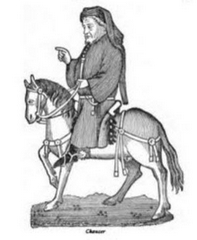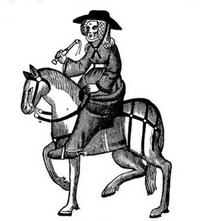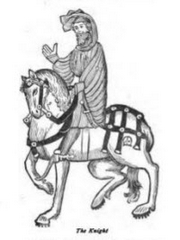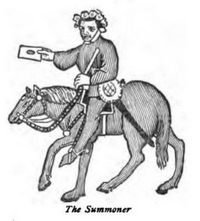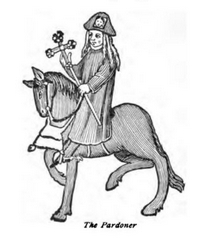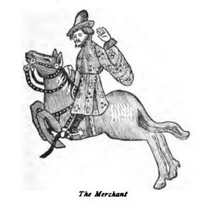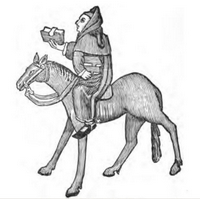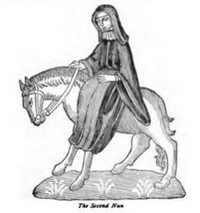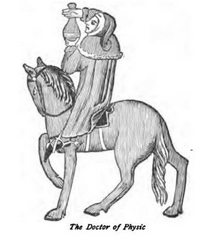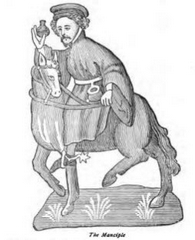Canterbury and the Shrine of Thomas a Becket
|
This is a section is about the city of Cantebury, and the shrine of Thomas a Becket, which was the goal of the pilgrim's in Chaucer's collection of stories.
|

Canterbury Cathedral
Canterbury (ancient Durovernum) is a city of Kent, England; on the river Stour; 56 miles E. S. E. of London. It is the metropolitan see of England, being the seat of the Archbishop of Canterbury, who is Primate of all England and has precedence immediately after the royal dukes in court ceremonies. The archiepiscopal see or province of Canterbury comprises the dioceses of Canterbury, London, Winchester, Bangor, Bath and Wells, Bristol, Chichester, Ely, Exeter, Gloucester and Bristol, Hereford, Lichfield, Lincoln, Llandaff, Norwich, Oxford, Peterborough, Rochester, St. Albans, St. Asaph, St. Davidís, Salisbury, Southwell, Truro, and Worcester. Canterbury stands in a vale or level space between hills of moderate height. St. Augustine became the first Archbishop of Canterbury in 597 a. d. About this time the town was the capital of the kingdom of Kent, and was called Caer Cant (i. e. city of Kent). Archbishop Cuthbert built here, about 740 a. d., a church which received numerous additions in succeeding ages. The choir having been destroyed by fire in 1174, it was soon rebuilt by William of Sens. This restored choir is probably one of the oldest parts of the cathedral, which presents a magnificent union of almost every style of Christian architecture. The central tower is 234 feet high, and the total exterior length of the cathedral is 545 feet. Immense numbers of pilgrims came here to worship at the shrine of Thomas a Becket, who was killed in the north transept in 1170. In Chaucer's Canterbury Tales, a group of pilgrims representing diverse levels of Medieval English society and occupations is traveling to the shrine of Thomas a Becket in Canterbury. They tell each other stories as part of a friendly competition, with a free meal as its prize, and the stories are collected in the book. Canterbury Tale Summaries
Sponsors: |
|
